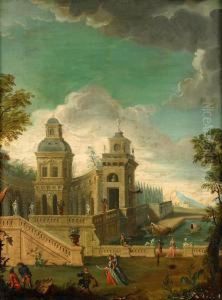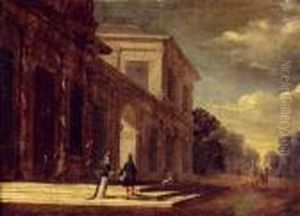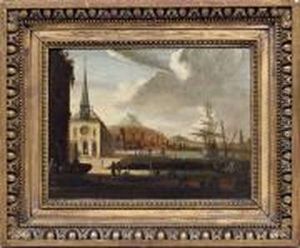Jacobus Peeters Paintings
Jacobus Peeters was a Flemish painter born in 1655 in Antwerp, a city renowned for its vibrant artistic community during the 17th century. As a historical figure within the realm of European art, Peeters is most celebrated for his contributions to the genre of landscape painting, a field in which he excelled and helped to further develop during his lifetime. Despite the era's inclination towards highly detailed and dramatic religious and historical scenes, Peeters found his calling in capturing the serene beauty of nature, making him a noteworthy figure among his contemporaries who were predominantly focused on more figurative subjects.
Peeters' career unfolded during a period known as the Dutch Golden Age, a time when art, science, trade, and the military were flourishing in the Netherlands, including the Southern Netherlands (modern-day Belgium), where Antwerp was a major hub. This era was characterized by a significant increase in cultural production, with landscape painting emerging as a popular genre for the burgeoning middle-class market. Peeters embraced this shift, dedicating his artistic endeavors to depicting landscapes imbued with a sense of tranquility and often infused with subtle moral or allegorical messages.
Not much is known about Peeters' early life or training. It is believed that he was likely apprenticed to a local master in Antwerp, as was customary for young artists at the time. Throughout his career, Peeters developed a distinctive style characterized by a meticulous attention to detail and a masterful use of light and color to evoke mood and atmosphere. His works often feature idyllic pastoral scenes, seascapes, and occasionally, winter landscapes, which were popular among collectors of the period.
Unfortunately, despite his contributions to the art of landscape painting, Jacobus Peeters did not gain the same level of fame as some of his contemporaries, such as Peter Paul Rubens or Anthony van Dyck. However, his paintings continued to be appreciated by connoisseurs and collectors for their serene beauty and technical skill. Today, his works are held in several museums and private collections, where they are studied and admired for their contribution to the development of Flemish landscape painting.
Jacobus Peeters passed away in 1732 in Antwerp. His legacy, while somewhat overshadowed by the more prominent figures of his time, remains an important part of the history of Flemish art. Through his dedication to capturing the natural world, Peeters helped to pave the way for future generations of landscape artists, contributing to the genre's enduring popularity and evolution.


